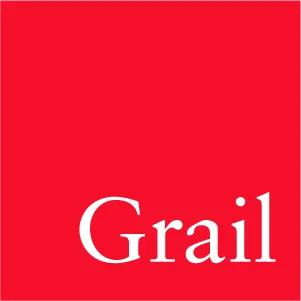Article published on May 29, 2014
By Danielle Verbrigghe
Source: FundFire
The largest of the so called ‘RIA aggregator’ shops, Focus Financial Partners, has set an aggressive acquisition pace so far this year, driven in part by a ramp-up in resources within its wirehouse lift-out program.
In fact, the fast-growing firm appears to be on track to outpace last year’s acquisition growth. So far this year, the RIA aggregator has completed 13 transactions, adding more than $4 billion in client assets. That compares with 10 such deals in 2013, which collectively added more than $5 billion in client assets.
The firm has benefited from an increase in resources behind its Focus Connections program, which targets wirehouse teams looking to transition to independence, says Rudy Adolf, Focus Financial Partners’ founder and CEO.
“We have invested more in this area because we think it is very, very attractive,” says Adolf. “It’s a terrific channel, first and foremost, because it is such a compelling value proposition. There’s such a big benefit for a client to move with an advisor towards independence.”
Over the past year and a half, Focus, which represents about $75 billion in overall client assets across about 30 partner firms, has ramped up resources behind the Connections program, including adding personnel and raising capital to fund transactions. This year, six of its 13 deals have gone through the program.
But wirehouse lift-outs are only one piece of the transaction mix. The firm also invests in large RIA firms, targeting those with at least $400 to $500 million in client assets. Those shops usually join as stand-alone partner firms. Through its merger program, Focus provides capital and transition support to help existing partner firms acquire advisors, targeting shops with between $100 million and $400 million in client assets. Additionally, Focus offers a succession program targeting smaller deals.
While Adolf expects to see growth coming from all of these channels, he expects to see particularly strong growth from the Connections program, as more wirehouse teams break away.
“We’re on a very good trajectory,” Adolf says. “Focus has a very large war chest in terms of capital we can deploy.”
An example of one such recent deal came earlier this month, when Focus announced that a team of former Merrill Lynch advisors with more than $750 million in client assets, had launched a new RIA, Quadrant Private Wealth. Working with the Focus Connections program, Herman Rij, Jason Cort, Kori Lannon and Brian Cort left Merrill to form the new Bethlehem, Penn.-based firm.
And earlier this week Focus announced that former Wells Fargo advisors Joseph Zappia and Ted Garofola had joined one of Focus’s existing RIA partner firms, LVW Advisors. Zappia, who will lead a new family office unit at LVW, had previously been a managing director and senior portfolio manager with the Zappia Investment Group at Wells Fargo Advisors, where he managed about $400 million in private client assets.
Lori Van Dusen, CEO of LVW Advisors, originally established the firm by linking with Focus in 2011. Before that, she had been with with Convergent Wealth Advisors, after earlier departing Smith Barney. Her choice to ultimately pick Focus was driven by her desire not only to grow organically, but to also make acquisitions.
“I decided it would be the most powerful combination to have an independent business backed by the resources of Focus and a lot of cheap capital,” Van Dusen says.
Now, her firm represents about $5 billion in overall client assets, including about $2.5 billion in assets under management.
When acquiring an advisor shop, Focus typically takes between a 40% and 60% stake. While the firm provides transitional and operational support, the RIAs continue to function as independent shops. While Focus doesn’t create its own portfolios or recommend investments, it does offer partner firms access to third-party research from providers including Mercer, CAIS, Fund Evaluation Group, Goldman Sachs, eVestment and Zephyr. Each partner firm ultimately makes its own investment selections.
“The core of our formula is you never turn a successful entrepreneur into an employee,” Adolf says. “We have a very decentralized business model.”
Breakaway advisors are often drawn toward linking up with firms that represent a mix of independence and assistance, says Dan Inveen, principal and director of research of FA Insight.
“There are a lot of different flavors that a transitioning breakaway can choose for their affiliation model,” Inveen says. Though the business models vary, firms like United Capital and HighTower also target such advisors. Firms that can build adequate scale and resources specifically supporting breakaway advisors may stand to benefit over those that are just dabblers, Inveen says.
“If you specialize in understanding the needs and challenges of these folks you can become very good at it and prosper as a result,” Inveen says.
Focus has set the pace for other firms trying to build mega-RIA networks, says S. Craig Cognetti, a partner with Grail Partners.
“Their success has actually attracted a lot of people to try to do this,” Cognetti says. “While it seems simple, it’s actually a lot harder to do what they’re doing.”
Focus has an advantage in being well financed, and having a track record of growth through acquisitions, says FA Insight’s Inveen.
“Focus is one of few firms that has demonstrated some staying power,” Inveen says. “The fact that there’s not a lot of other Focus Financials out there indicates that this is not an easy business model to succeed at.”
